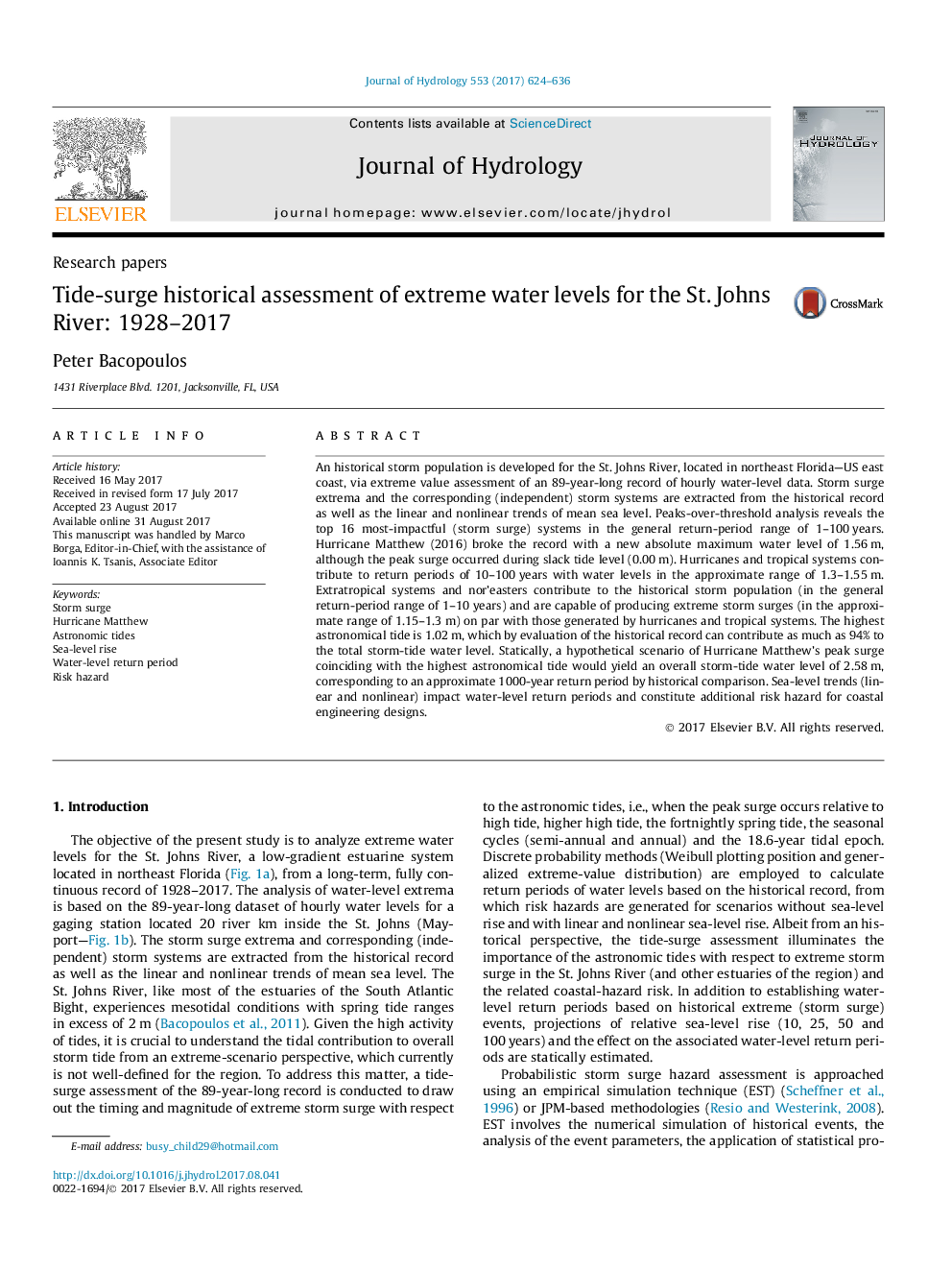| Article ID | Journal | Published Year | Pages | File Type |
|---|---|---|---|---|
| 5770843 | Journal of Hydrology | 2017 | 13 Pages |
Abstract
An historical storm population is developed for the St. Johns River, located in northeast Florida-US east coast, via extreme value assessment of an 89-year-long record of hourly water-level data. Storm surge extrema and the corresponding (independent) storm systems are extracted from the historical record as well as the linear and nonlinear trends of mean sea level. Peaks-over-threshold analysis reveals the top 16 most-impactful (storm surge) systems in the general return-period range of 1-100Â years. Hurricane Matthew (2016) broke the record with a new absolute maximum water level of 1.56Â m, although the peak surge occurred during slack tide level (0.00Â m). Hurricanes and tropical systems contribute to return periods of 10-100Â years with water levels in the approximate range of 1.3-1.55Â m. Extratropical systems and nor'easters contribute to the historical storm population (in the general return-period range of 1-10Â years) and are capable of producing extreme storm surges (in the approximate range of 1.15-1.3Â m) on par with those generated by hurricanes and tropical systems. The highest astronomical tide is 1.02Â m, which by evaluation of the historical record can contribute as much as 94% to the total storm-tide water level. Statically, a hypothetical scenario of Hurricane Matthew's peak surge coinciding with the highest astronomical tide would yield an overall storm-tide water level of 2.58Â m, corresponding to an approximate 1000-year return period by historical comparison. Sea-level trends (linear and nonlinear) impact water-level return periods and constitute additional risk hazard for coastal engineering designs.
Keywords
Related Topics
Physical Sciences and Engineering
Earth and Planetary Sciences
Earth-Surface Processes
Authors
Peter Bacopoulos,
